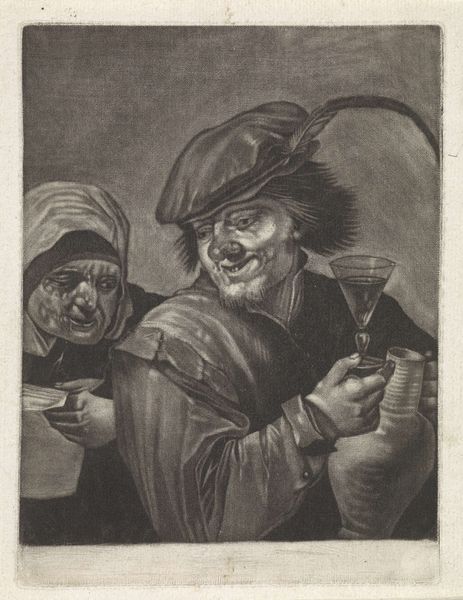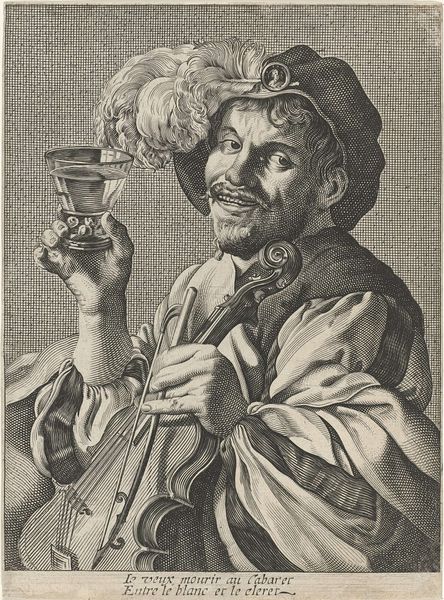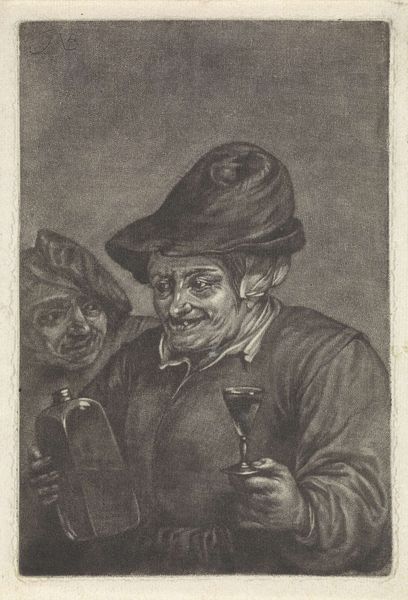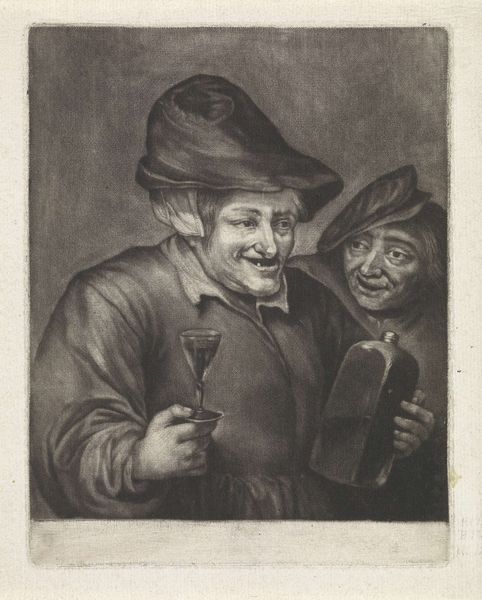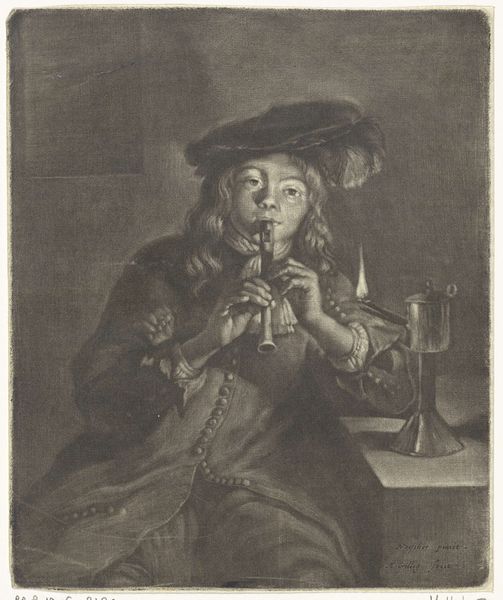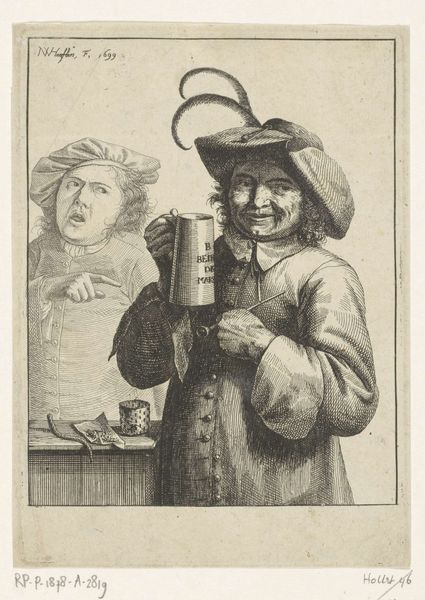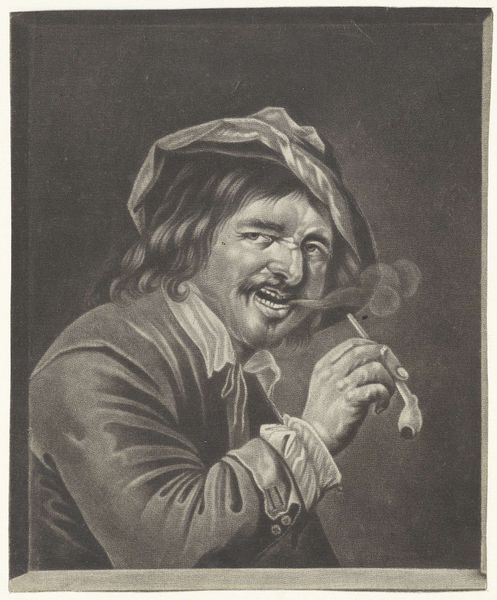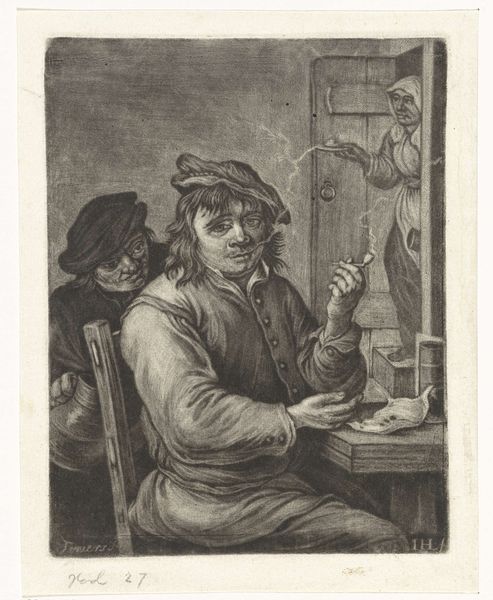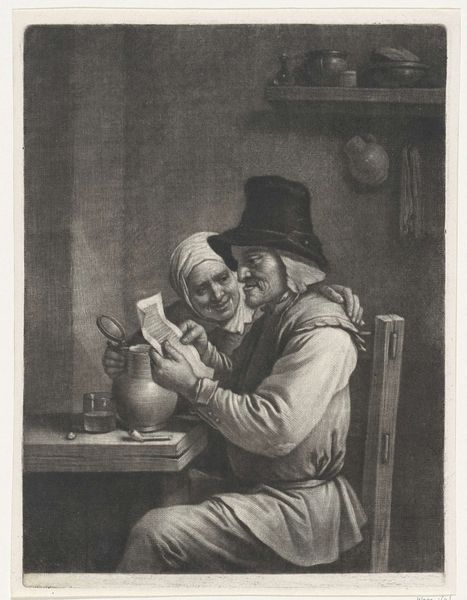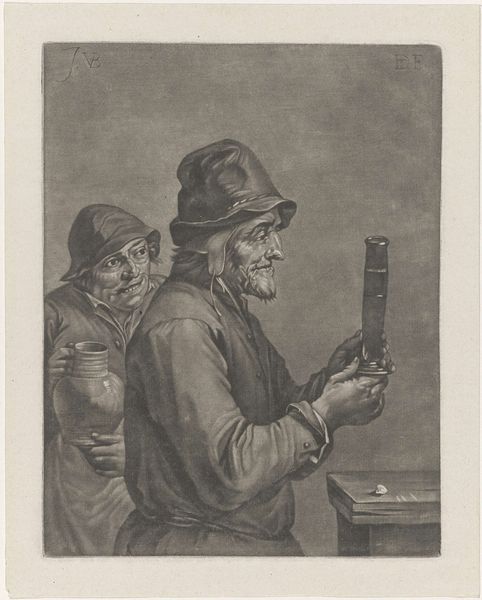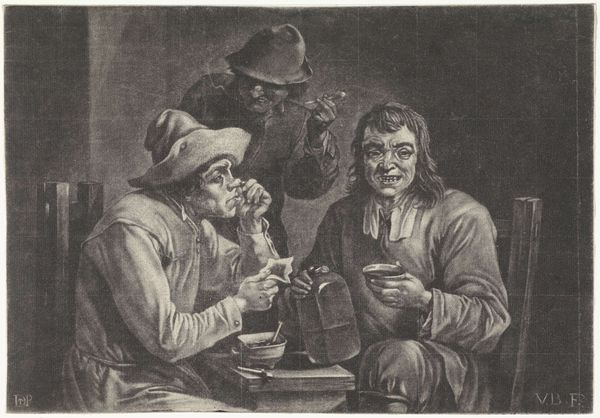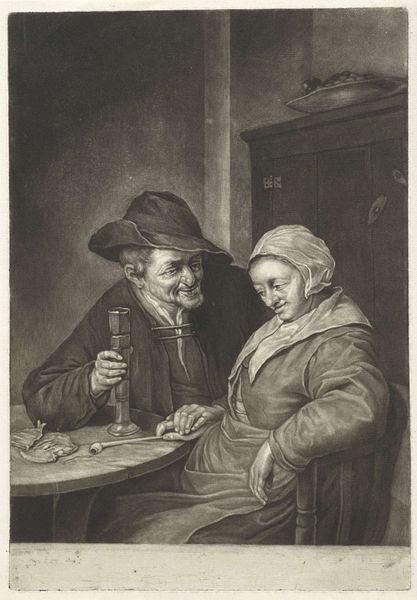
drawing, pen
#
portrait
#
drawing
#
narrative-art
#
baroque
#
caricature
#
caricature
#
figuration
#
pencil drawing
#
pen
#
portrait drawing
#
genre-painting
Dimensions: height 158 mm, width 120 mm
Copyright: Rijks Museum: Open Domain
Curator: Here we have Jan van der Bruggen’s drawing, “Man met kan en wijnglas (variant B),” created sometime between 1659 and 1740 using pen and pencil. Quite a fascinating example of Baroque figuration, wouldn’t you agree? Editor: My immediate impression is… disquiet. The harsh lines seem to exaggerate the subjects’ features to the point of caricature. There's something almost cruel in the depiction. Curator: Yes, and that exaggeration points to the means by which the artist chose to depict laboring class figures. What kind of pen and ink was available to an artist such as van der Bruggen at the time, and who was his likely patron? These things certainly speak to a burgeoning art market, driven by both skilled craftsmanship and available capital. Editor: I agree. Considering the period, such depictions might serve to reinforce social hierarchies, perhaps subtly mocking the lower classes for the entertainment of the elite. How complicit is van der Bruggen here? Is this critical social commentary or mere perpetuation of harmful stereotypes? It reminds me a little of some Hogarth prints, actually, which served a moralising and class-conscious purpose. Curator: Fascinating to consider. However, the very materiality – the accessible pen and ink on paper – suggests a democratisation of portraiture. A move away from oil on canvas as the privileged medium. Even this small work would’ve demanded both labour and resources for production, and its existence speaks to the complex relationship between art, craft, and consumption in that era. Editor: But let's think about accessibility. Was this drawing intended for public consumption or for a private collector? It prompts questions about who controls representation. Are these people actively participating in their own depiction? And who profits, culturally and economically, from images such as this? Perhaps the labor is also reflected in the lines across the weathered faces of the figures—there's definitely a contrast in age. Curator: Indeed. The textures achieved through varied hatching techniques speak volumes. I am keen to investigate the cost of materials and their distribution, something perhaps lost within social narratives that attempt to ascribe a moral judgment on the image itself. The level of the glass, the contents of the flagon. Every minute detail would've been a commercial transaction! Editor: A transaction that arguably continues with our very analysis. Perhaps our discomfort signals something useful, forcing us to interrogate not only historical biases but also the continuing politics of representation within our own spaces and viewing practices.
Comments
No comments
Be the first to comment and join the conversation on the ultimate creative platform.
